Ford F-150 Lightning Vs. F-150 Hybrid: What We Learned Towing and Hauling With an Electric Truck

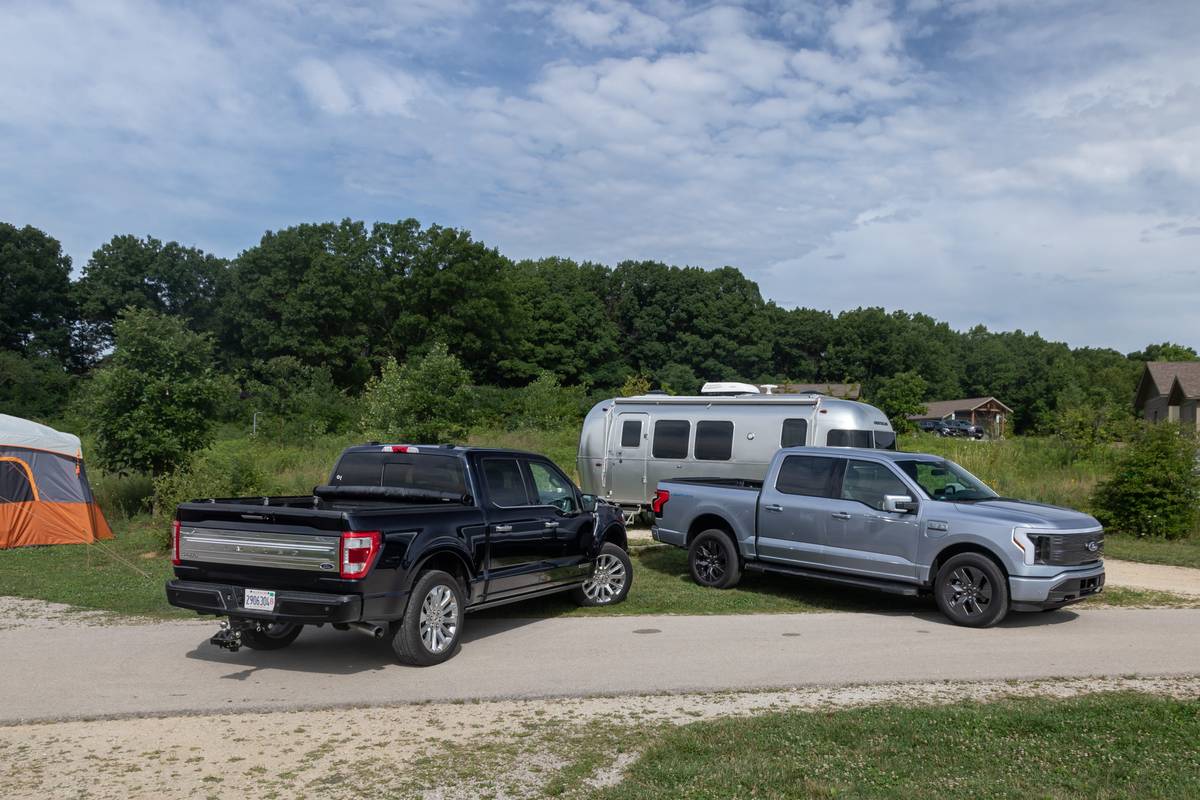
Until recently, those wanting an all-electric pickup truck didn’t have any choices. But the class has flourished lately with new trucks from startup and established automakers alike, including the Rivian R1T, GMC Hummer EV and, recently, Ford, which joined the class with the launch of the 2022 F-150 Lightning.
The Lightning is perhaps the most conventional all-electric pickup yet, with exterior and interior styling that’s similar to the regular F-150. That said, it has its own innovations, too, like a large power-opening front trunk, a higher-output version of Ford’s Pro Power Onboard generator, and the ability to power your house during an outage when using the available 80-amp Ford Charge Station Pro with a properly configured home.
Despite those unique capabilities, we know that an electric truck still needs to perform the same duties expected of gas-powered ones — specifically towing and hauling. So to test the Lightning, we measured acceleration with and without 1,220 pounds of payload in its bed. We also pulled a 5,900-pound Airstream travel trailer to see how well it towed and how a large trailer would affect overall driving range.
Coming along on the test was our long-term 2021 F-150 hybrid, Ford’s most electrified F-150 before the introduction of the Lightning, to serve as a reference point in the various tests. Both trucks had similar as-tested prices: around $78,000 for the 2021 F-150 Limited hybrid when it was new and around $80,000 for the 2022 F-150 Lightning Lariat. Today, however, a 2022 Limited hybrid like the one in this test is priced around $85,000. Lightning prices have also risen: For 2023, the truck we tested costs nearly $89,000.
| 2022 F-150 Lightning Lariat | 2021 F-150 Limited hybrid | |
|---|---|---|
| As-tested price: | $80,589 | $77,845 |
| Horsepower: | 580 | 430 |
| Torque (pounds-feet): | 775 | 570 |
| Curb weight (pounds): | 6,760 | 6,100 |
| Payload capacity (pounds): | 1,697 | 1,362 |
| Max. towing capacity (pounds): | 10,000* | 11,600 |
| *With included Max Trailer Tow Package; 7,700 pounds otherwise | ||
Related Video:
So, what did we learn? The short answer is that the Lightning should serve the work needs of certain customers quite well; for others, however, it’s not yet a practical replacement for a gas- or diesel-powered truck. Read on for more details of how it performed while towing, what it was like charging at a DC fast charger and how quickly it accelerates.
How Well Does the F-150 Lightning Tow?
To test the Lightning’s towing performance, we took it on a drive loop with and without the travel trailer and did the same with the F-150 hybrid. When you only judge the Lightning’s towing performance by the subjectivity of how it felt from the driver’s seat, it’s an impressive tow vehicle. It didn’t have any trouble pulling the Flying Cloud 23FB travel trailer, and the truck’s immense 775 pounds-feet of torque gave it stronger performance than the F-150 hybrid (570 pounds-feet of torque) when starting off from a stop.
While we liked the Lightning’s quietness and smoothness when towing, you just can’t plan on towing that far with it. We started our approximately 140-mile towing route with the Lightning’s extended-range battery pack at a 97% state of charge and the truck showing 317 miles of predicted range. With the Airstream hitched to the truck and the truck in its towing mode, the predicted range soon dropped to 158 miles — right around half of what it was before. Entering your trailer’s specs in a trailer profile can improve the Lightning’s predicted range accuracy when towing.
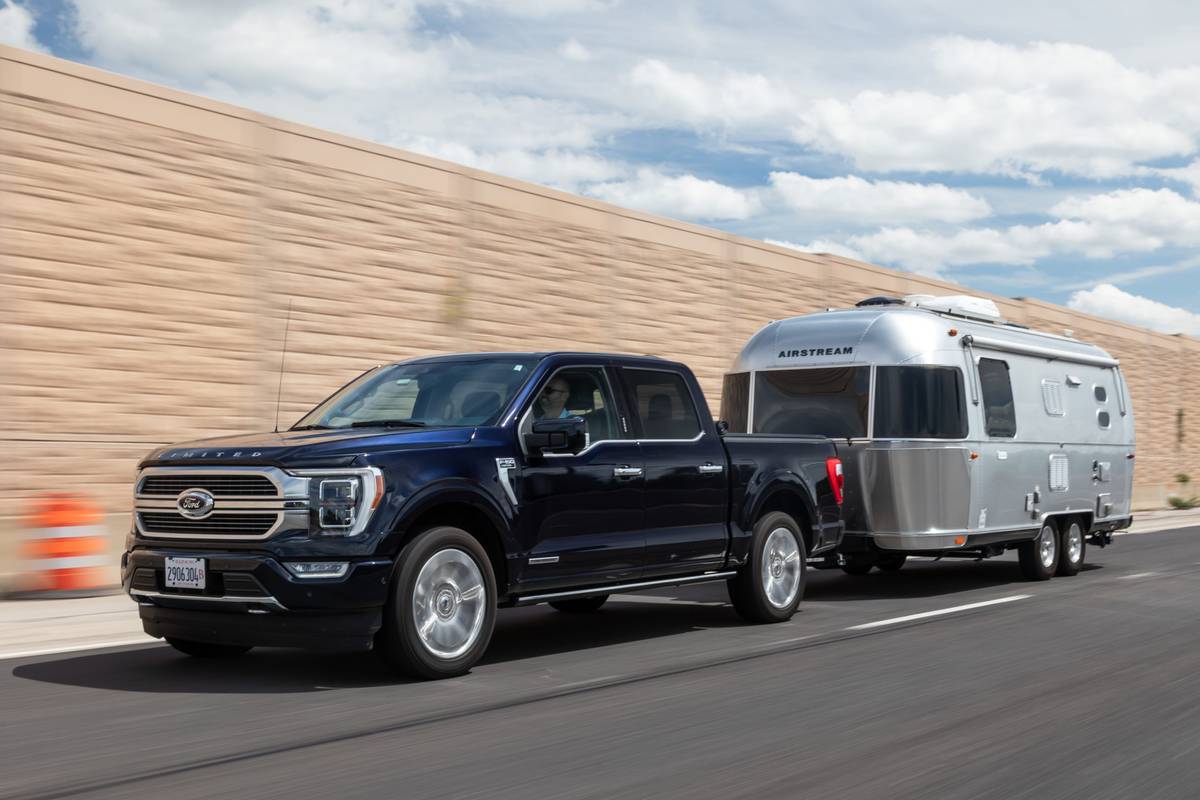
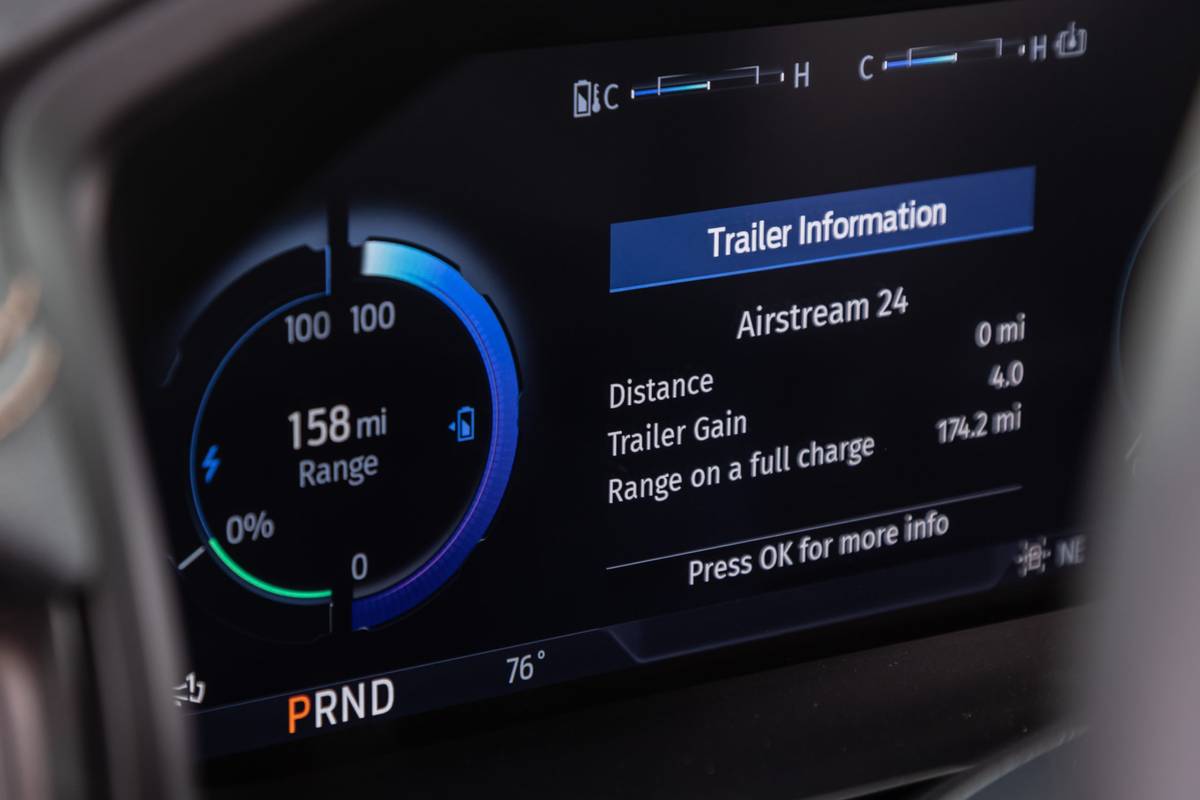
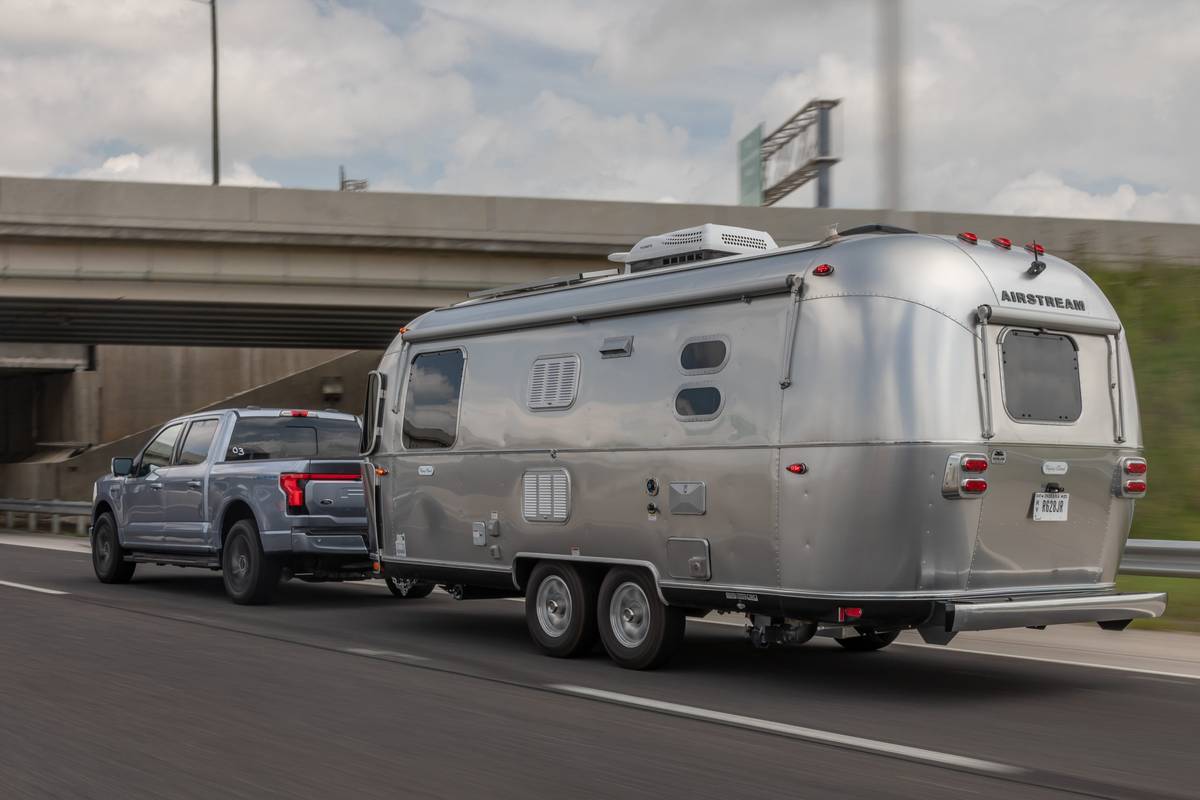
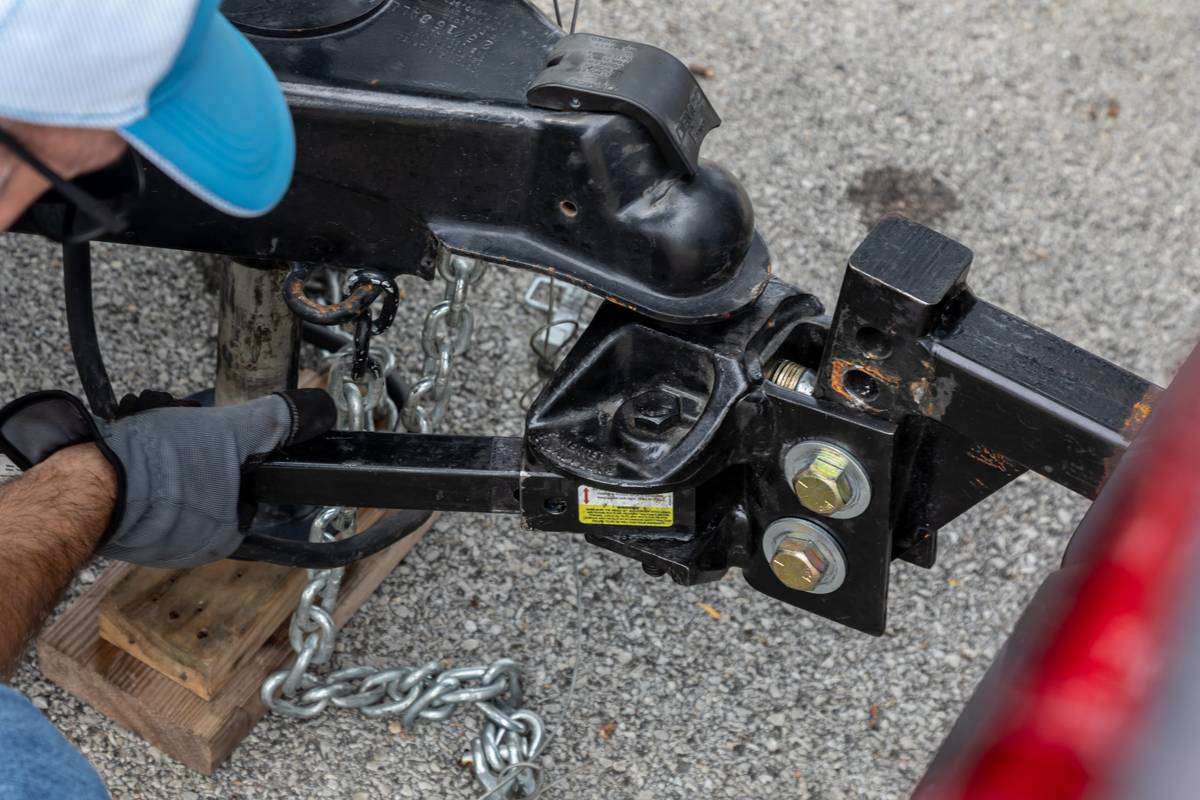

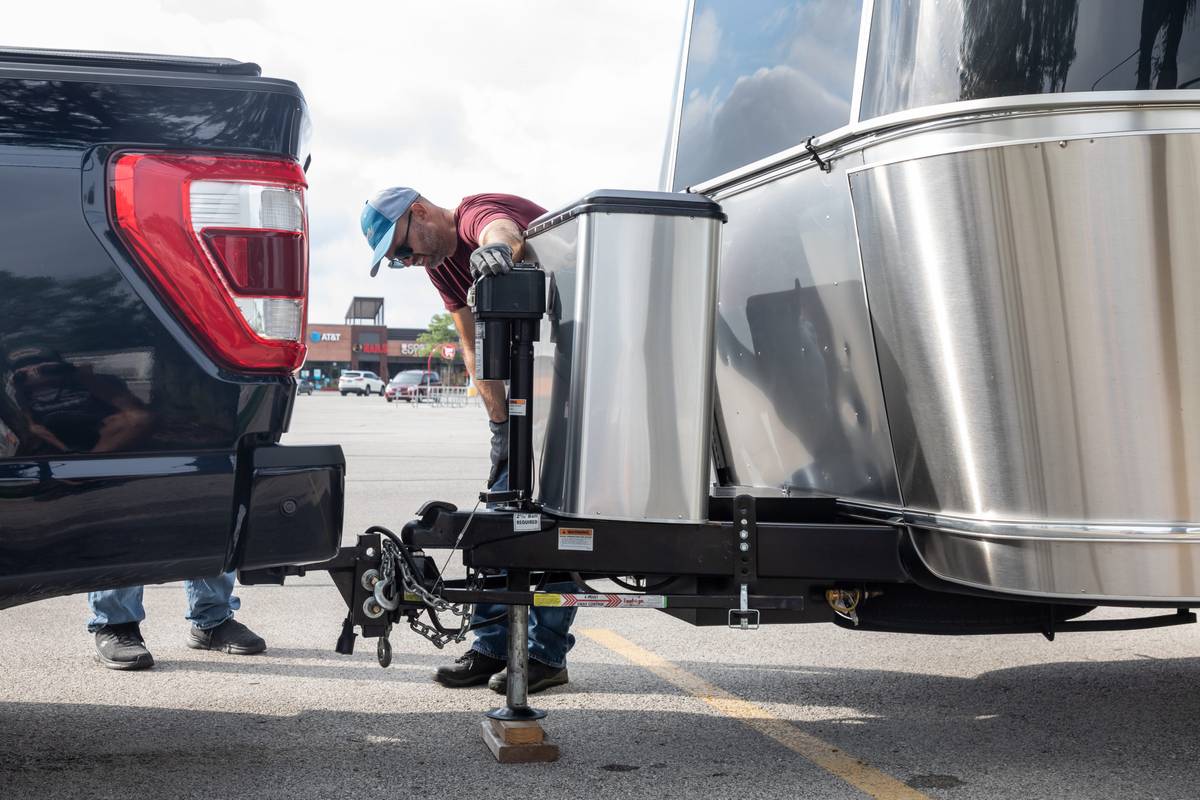
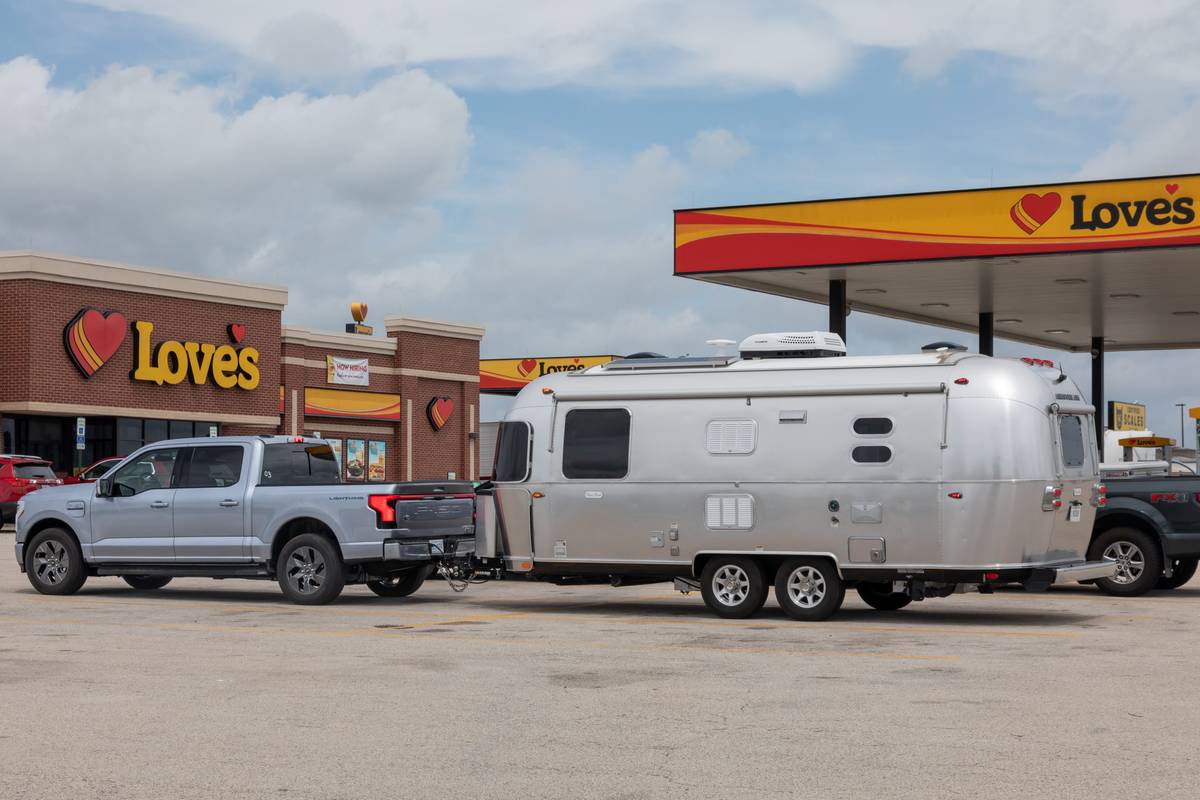
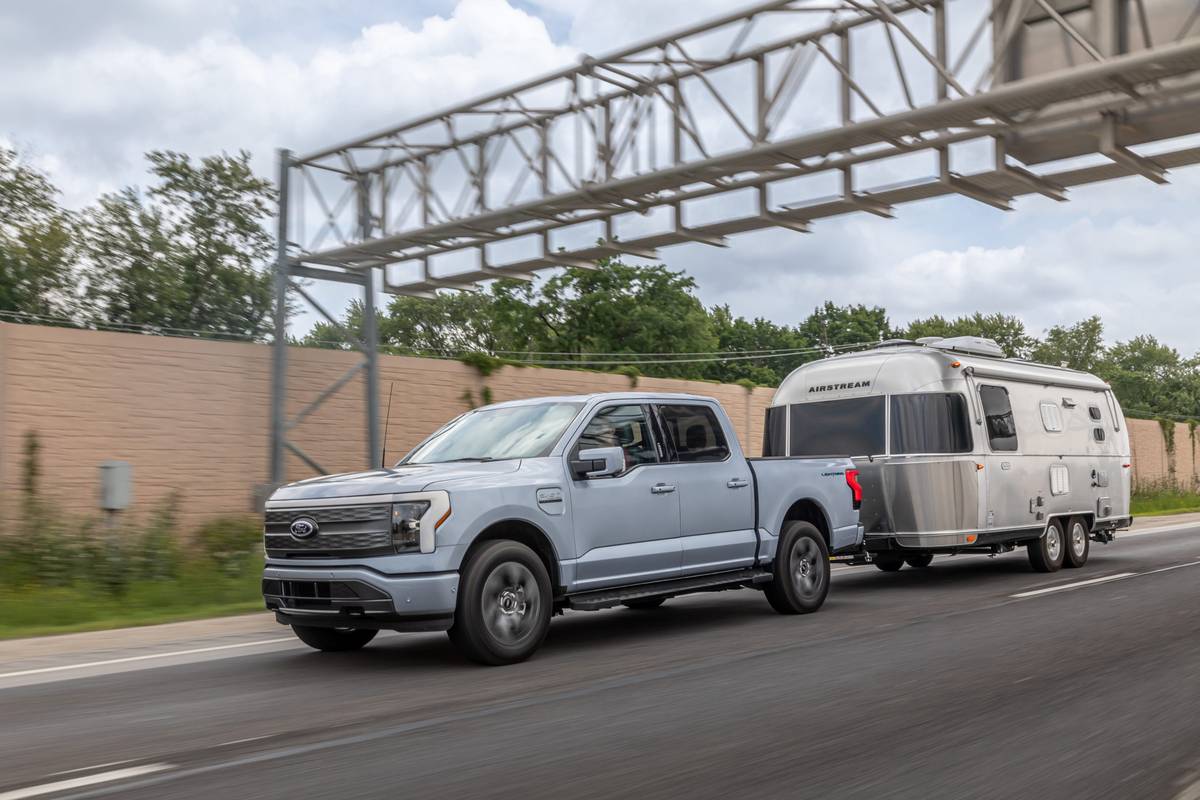








The sudden drop in predicted range was a bit unnerving, but we soon realized that the new range estimate was one we could rely on; at the end of our drive route, the truck’s predicted range reading had decreased by 131 miles, and we’d traveled 136 miles, making it only about 4% off the mark. The Lightning’s average efficiency when towing was 1.3 miles per kilowatt-hour, or around half the 2.5 miles per kWh we observed when we drove the truck on the same route the following day without a trailer in tow.
The F-150 hybrid also saw its average efficiency cut in approximately half when towing, from a trip-computer average of 26.6 mpg when driven on the route without a trailer to 12.6 mpg when towing the Airstream the following day. Traffic conditions both days were similar, and our mostly flat drive route consisted of a mix of suburban streets with stop-and-go traffic, traffic-free rural roads and a stretch of interstate highway with moderate traffic.
Even though the trucks saw similar average efficiency losses, the hybrid, with its 30.6-gallon fuel tank, has a theoretical driving range when towing the Airstream that’s still more than double the Lightning’s: Multiplying the hybrid’s tank size by its towing efficiency gives it 386 miles of range, while multiplying the extended-range Lightning’s 131-kWh battery capacity by its towing efficiency of 1.3 miles per kWh gives it a range of 170 miles. The hybrid’s refueling time can also be measured in minutes; the Lightning’s, as we learned when we fast-charged it at the end of our towing drive, is measured in hours.
How Fast Does the F-150 Lightning Charge?
Unlike at many gas stations, where you can pull through with a trailer to refuel, most public charging stations aren’t designed to accommodate EVs while towing. We had to unhitch the Airstream from the truck before the DC fast-charging test could begin. Most charging stations are located on the outskirts of parking lots, with the charger at the curb in front of a regular parking space. If the Airstream were left hitched while charging, it would have blocked a traffic lane in the parking lot, and we didn’t want to be those people.
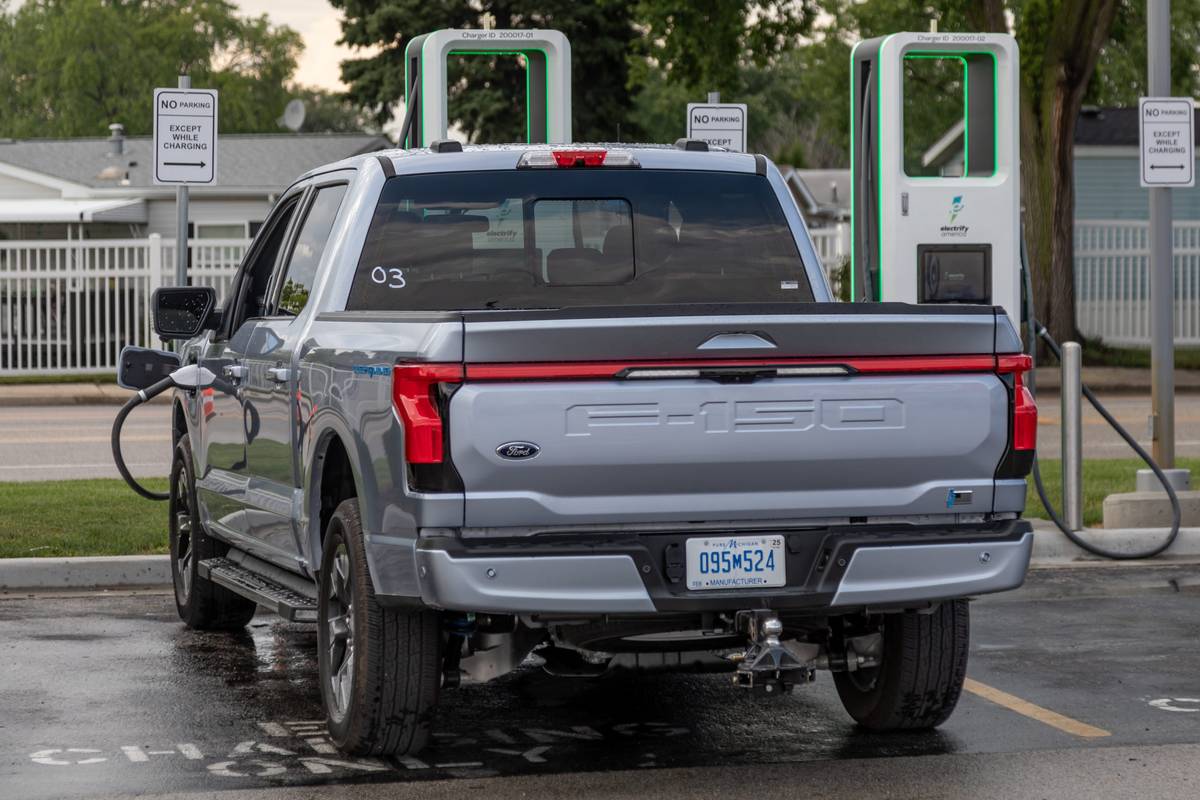
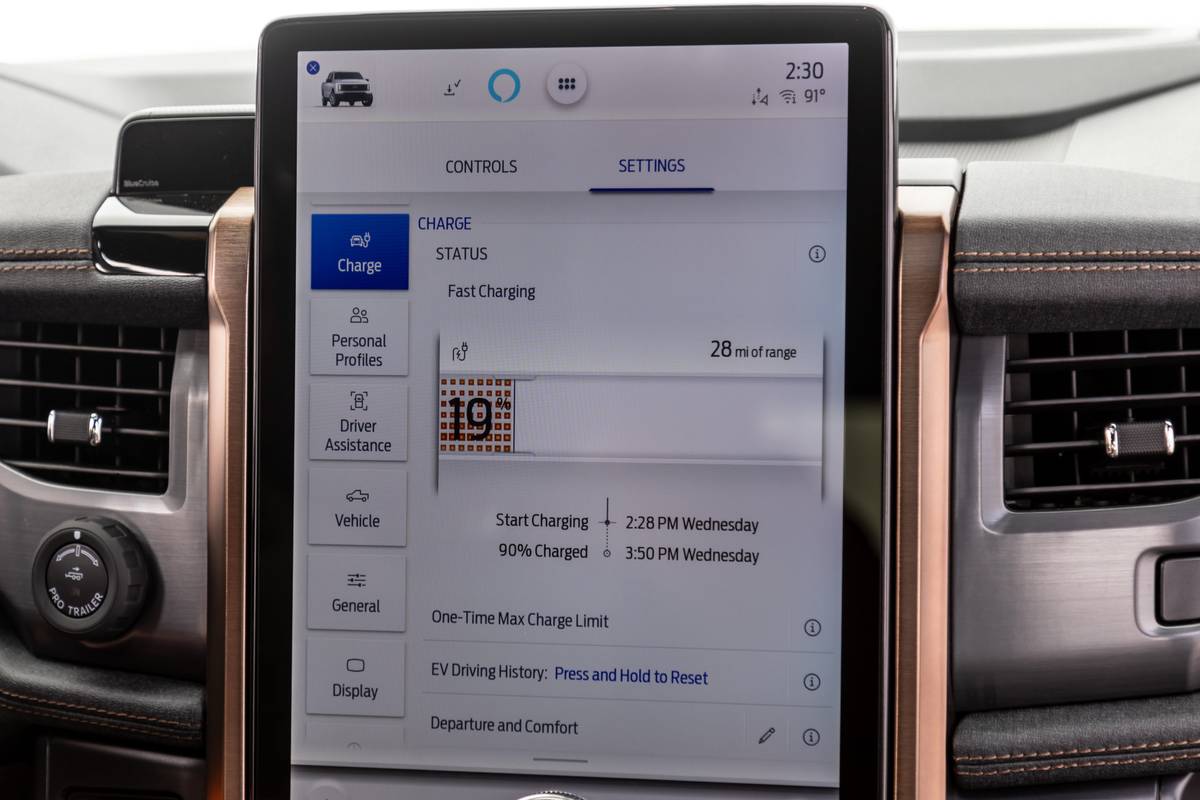
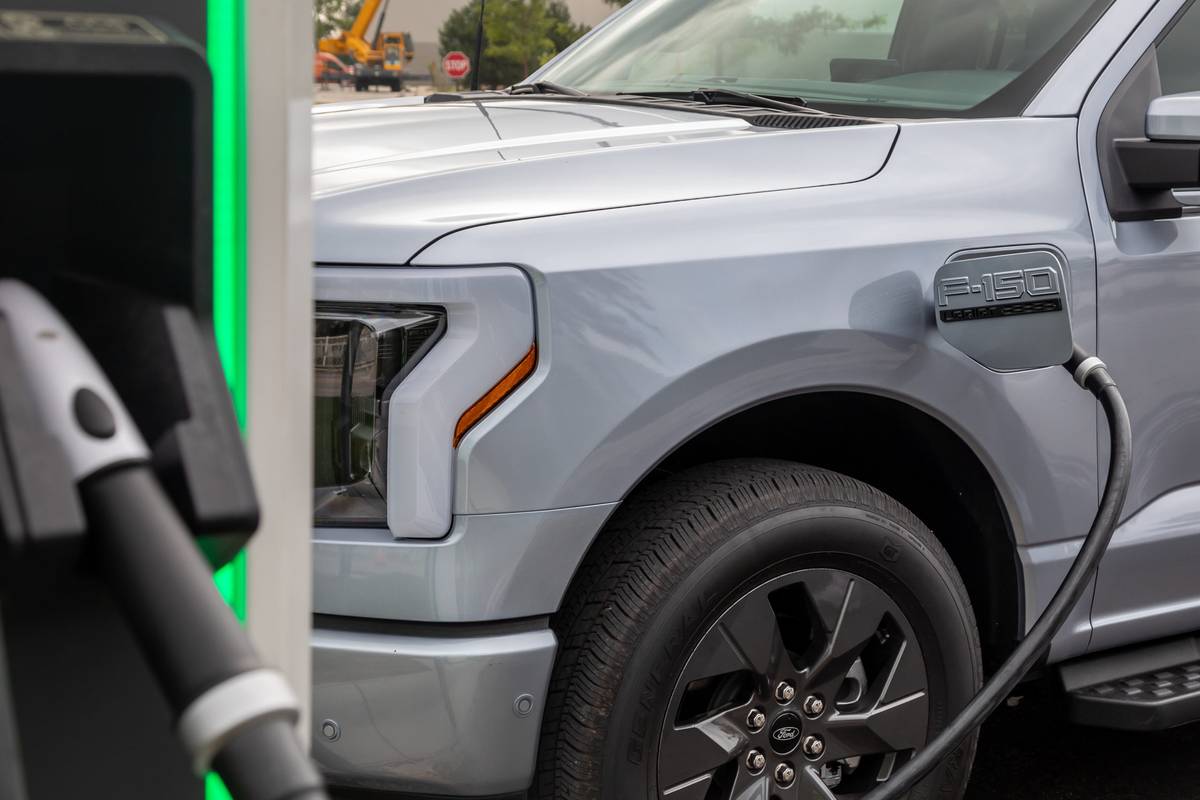
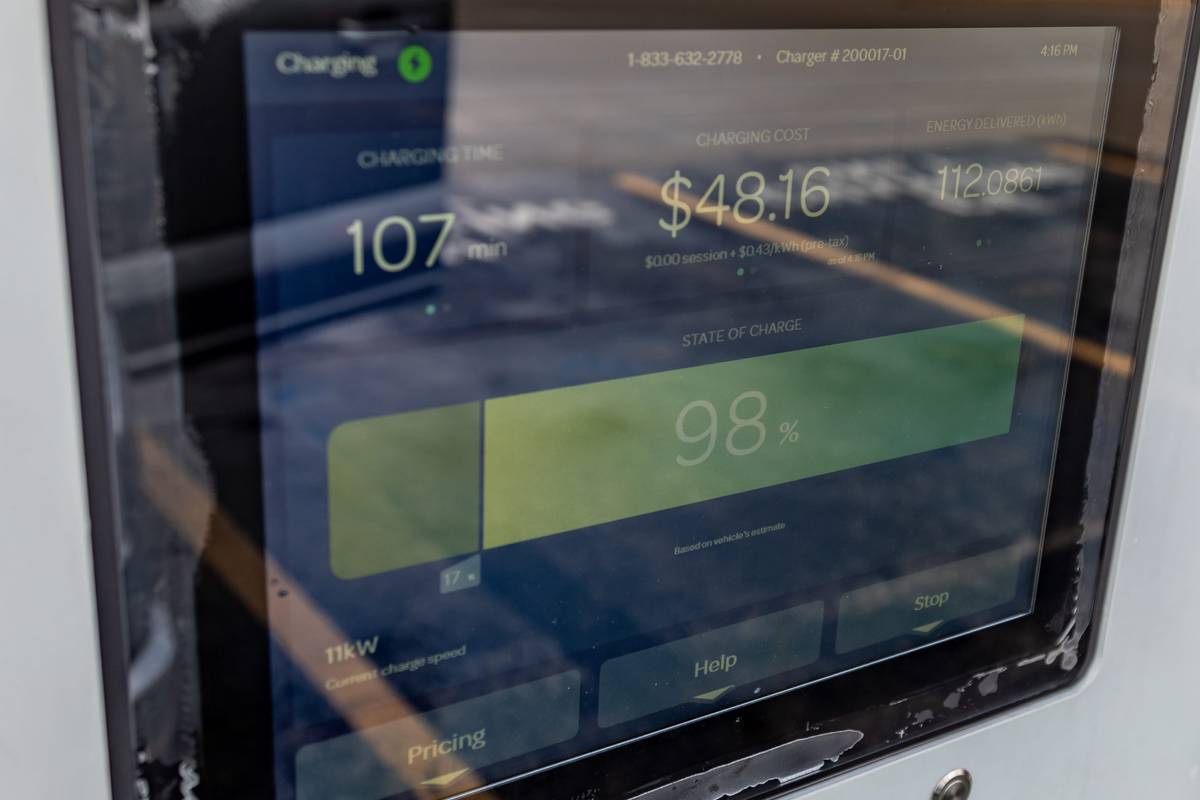
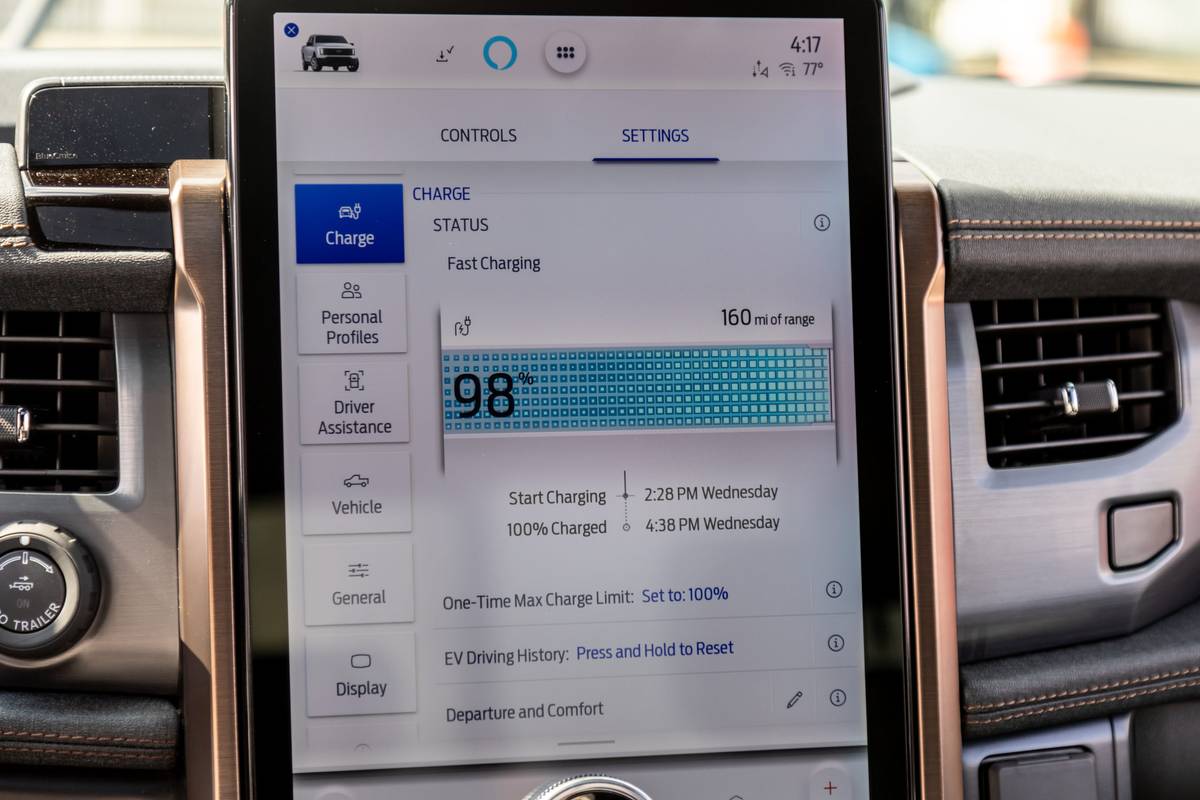





As it was, the 150-kilowatt Electrify America charging station’s location in the distant reaches of the parking lot meant there was plenty of space for our unhitched trailer, and it only took five minutes or so to unhitch it from the truck. Still, it’s more time added to a long refueling process.
At the start of our charging test, the Lightning’s battery was at a 17% state of charge, and the truck was showing a predicted range of 26 miles; 45 minutes later, the battery had reached an 80% state of charge, with the charger’s screen showing 84.5 kWh of energy added. Charging speeds were fairly consistent over the 45-minute session, ranging from around 100 kW to 125 kW. These results are close to the 41 minutes Ford says it should take to fast-charge from 15% to 80%.
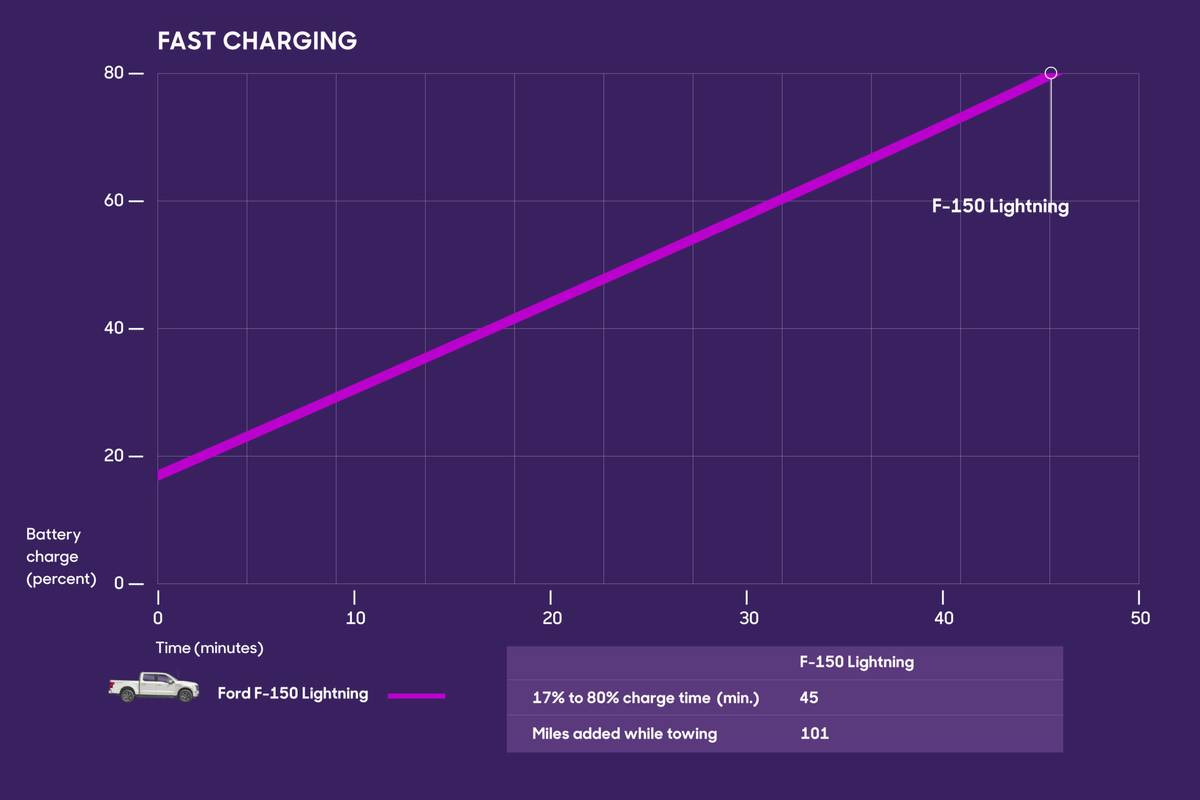
The truck’s predicted range at 80%, however, stood at 127 miles — a reflection of the truck’s recent towing work. Adding 101 miles of range in 45 minutes works out to just 2.2 miles of range added per minute. Even though fast-charging speeds tend to drop when charging above 80%, we kept going in order to maximize our range, as an owner on a towing trip might.
As expected, our charging speed dipped as we passed an 80% state of charge; it took 1 hour, 25 minutes to go from 80% to 100%, and this added just 36 miles of predicted range for a total predicted range of 163 miles on a full charge. Over the entire charging session, which took 2 hours, 10 minutes, the Lightning added 115.4 kWh of energy at a cost of $49.45. Lightning buyers do get 250 kWh of complimentary energy at Electrify America charging stations, but it won’t take long to use it up charging the big battery in extended-range variants.
The difference in refueling time between the trucks was even more significant than the already significant differences in their driving ranges when towing. While it took more than two hours to recharge the Lightning at the end of the towing route, it took mere minutes to add 10.6 gallons of premium gas to the hybrid after its towing run, at a cost of $71.34. What drivers of gas-powered vehicles have grown accustomed to — speedy refueling times — just don’t exist yet with EVs even at so-called fast-charging stations.
How Does Payload Affect the F-150 Lightning’s Acceleration?
The Lightning is an impressively quick full-size truck — regardless of whether you have any payload in its cargo box. The dual-motor, four-wheel-drive truck launches with a vengeance and just a bit of wheel slip as its four tires dig for traction. The truck arrives at 60 mph in just 4.19 seconds when the bed is empty and increases just 0.6 second to 4.79 seconds with 1,220 pounds of sandbags in the bed. The hybrid, by comparison, is more than 1.5 seconds behind the Lightning in both tests.
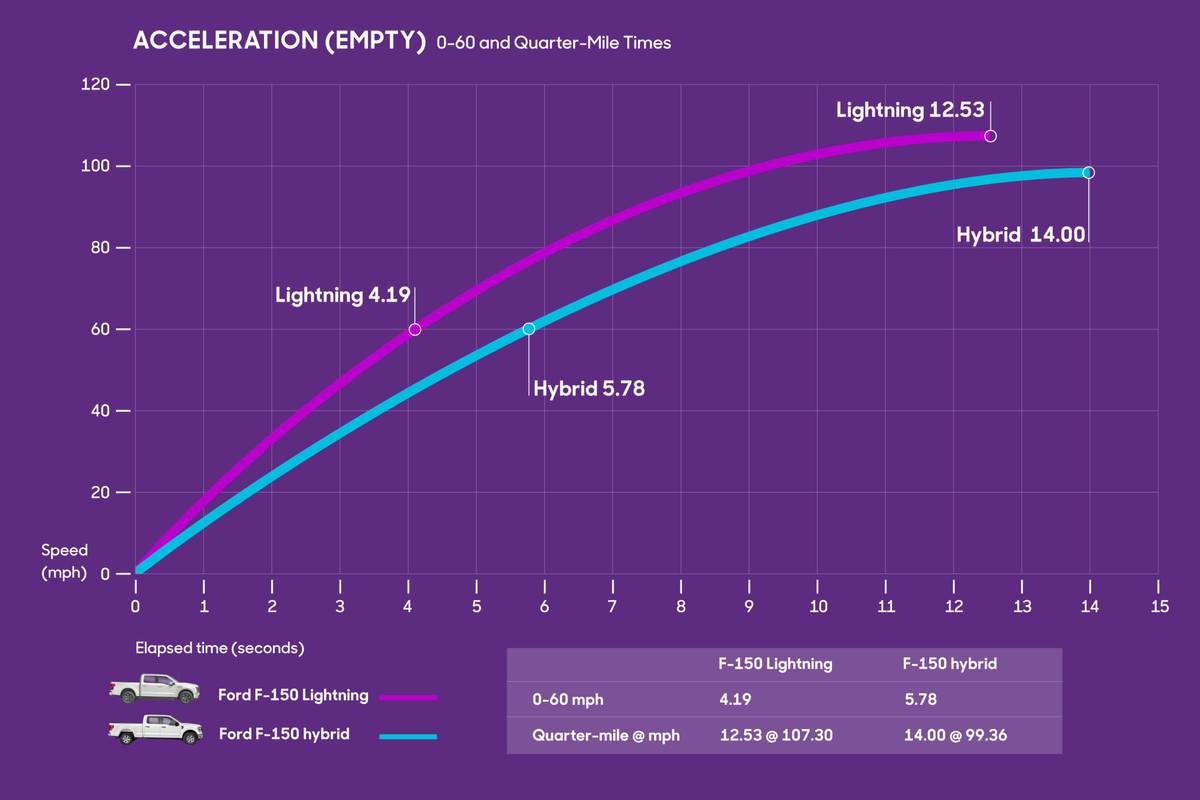
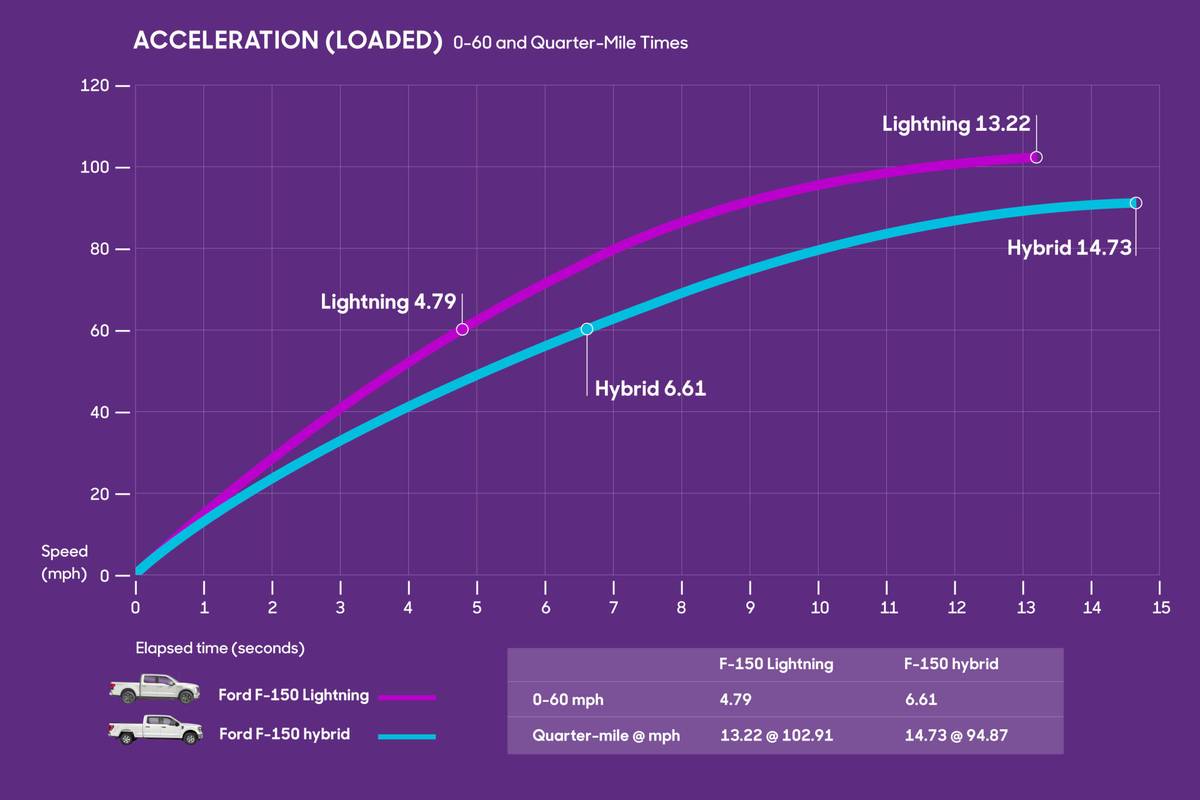


Though the Lightning establishes a big gap by 60 mph over the F-150 hybrid, it shrinks a bit by the time the quarter-mile arrives. When driving the Lightning, we felt a loss of power near the end of the quarter-mile, with the empty truck traveling around 107 mph at that point.
The Lightning’s immediate power delivery was also apparent in our 50-70 mph acceleration test. Unloaded, it bested the hybrid by nearly a second — 1.99 seconds versus 2.96 seconds. The hybrid takes a moment to respond with a transmission kickdown before accelerating, but the Lightning shoots forward instantly — no waiting required. With our sandbag payload in the bed of each truck, the gap grew to 1.07 seconds, with the Lightning going from 50-70 mph in 2.26 seconds versus 3.33 seconds for the hybrid.


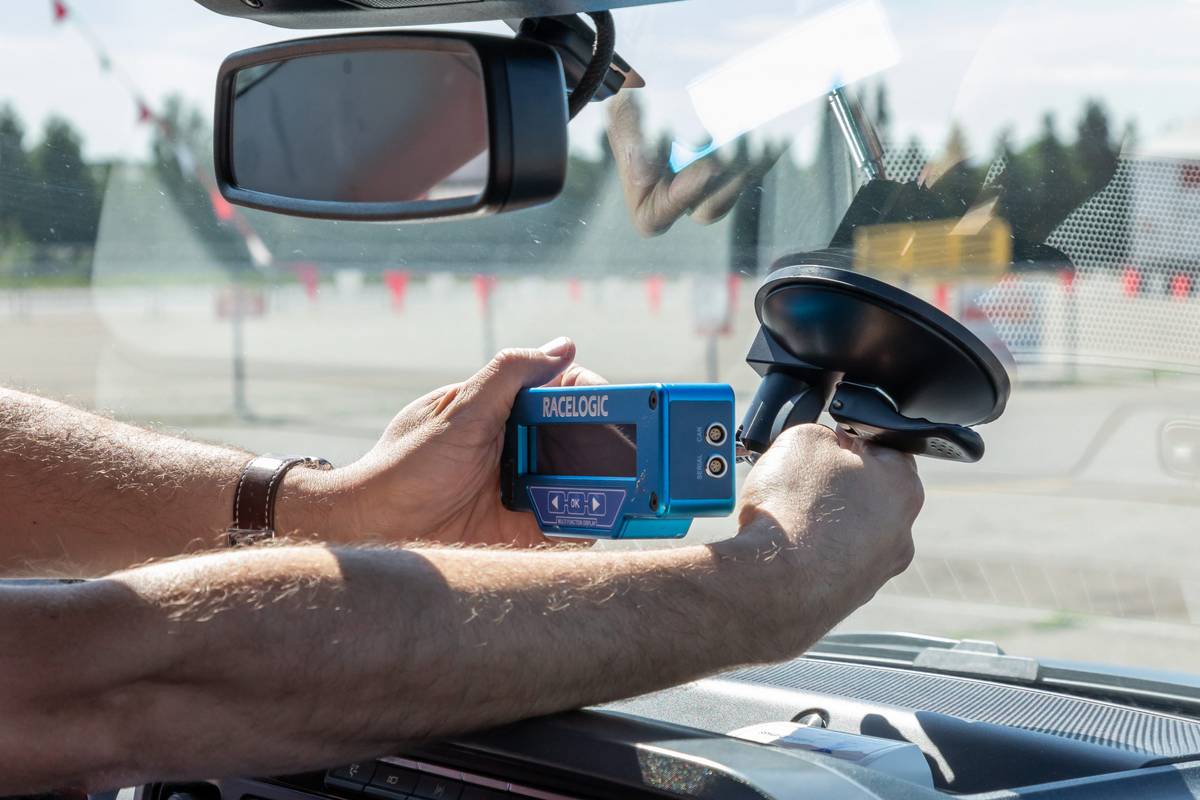
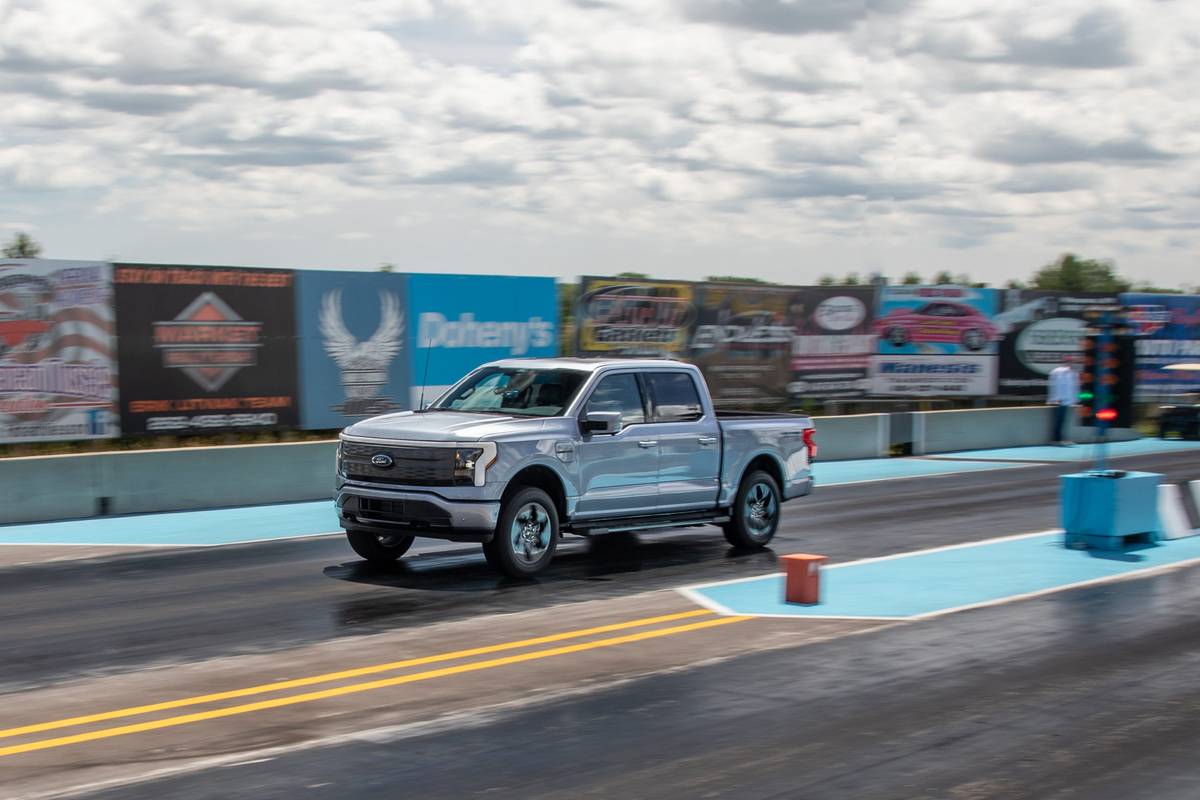
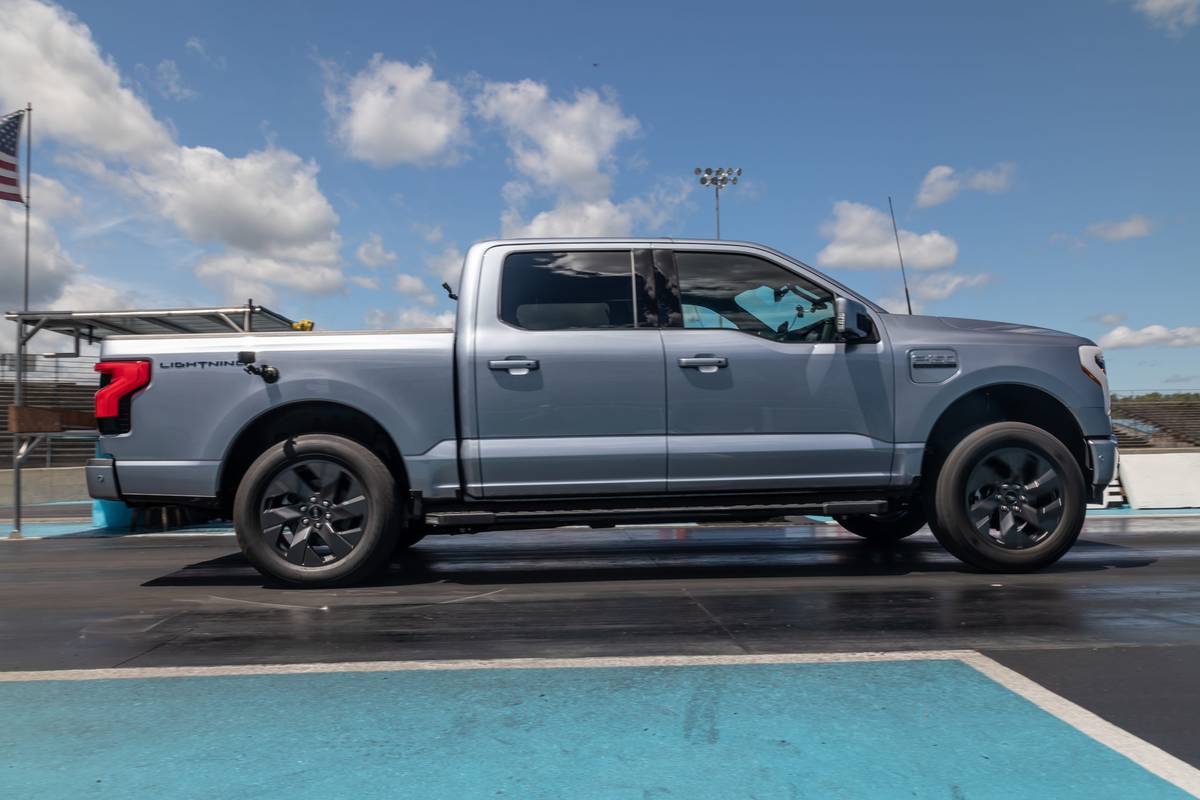

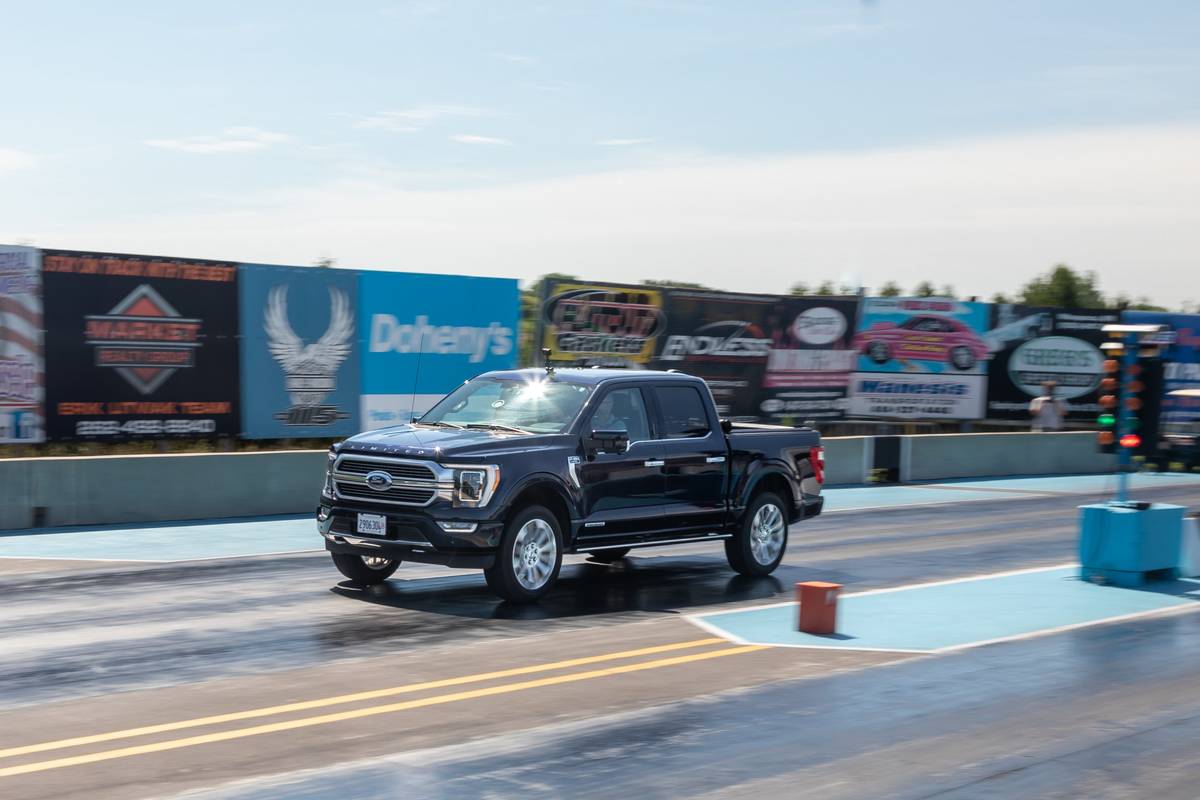
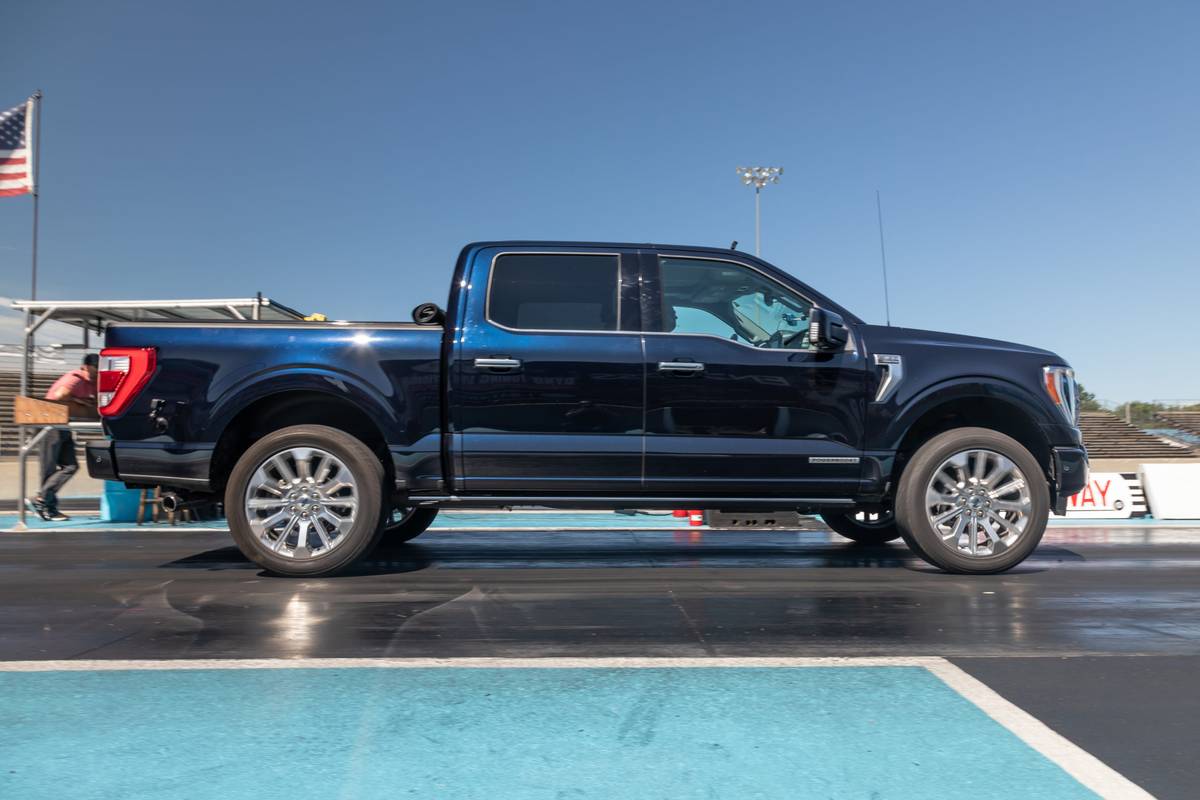








Should You Buy a Ford F-150 Lightning?
The answer to that question depends largely on what you plan to do with it. While the Lightning easily towed our Airstream camper and wasn’t burdened by the payload we put in its cargo box, its towing range and fast-charging times are shortcomings that make it an impractical choice for towing trips of even moderate distances, let alone longer journeys. A towing trip that ends at a campsite with electrical hookups could be a convenient charging alternative, letting you charge your truck before the trip home using the Lightning’s mobile charger, but that assumes the site hookups are fully functional.
What this test illustrated for us is that the F-150 Lightning is better for someone who has in-town towing or hauling needs, allowing the truck to end the day plugged into a home charging setup, where it can charge overnight and be ready for the next day’s work. For long-distance towing and hauling, the F-150 hybrid makes more sense.
More From Cars.com:
- 2023 Ford F-150 Lightning: Order Bank Reopens With More Range, Higher Prices
- What to Know Before Purchasing an Electric Vehicle: A Buying Guide
- What Is Level 1, 2, 3 Charging?
- What It Cost to Outfit 6 Homes With EV Chargers
- Shop for a New Ford F-150 Lightning
Cars.com’s Editorial department is your source for automotive news and reviews. In line with Cars.com’s long-standing ethics policy, editors and reviewers don’t accept gifts or free trips from automakers. The Editorial department is independent of Cars.com’s advertising, sales and sponsored content departments.

Mike Hanley has more than 20 years of experience reporting on the auto industry. His primary focus is new vehicles, and he's currently a Senior Road Test Editor overseeing expert car reviews and comparison tests. He previously managed Editorial content in the Cars.com Research section.
Featured stories












